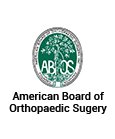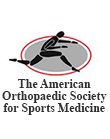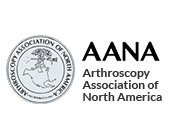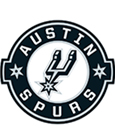AC Joint Surgery
Prevention
Acromioclavicular (AC) joint arthritis is a condition that develops when the cartilage cushioning the AC joint in the shoulder begins to wear out. The shoulder is a 'ball-and-socket' joint. A ‘ball' at the top of the upper arm bone, humerus, fits neatly into a 'socket’, the glenoid, which is part of the shoulder blade, scapula. The shoulder joint is made up of three bones, the collarbone (clavicle), scapula (shoulder bone), and humerus (arm bone). The AC joint is located where the clavicle meets the end of the shoulder blade, acromion.
The AC joint osteoarthritis occurs as a result of repeated movements of the arm and overhead activities. People who lift heavy weights overhead such as weightlifters and those involved in overhead sports such as basketball are at increased risk for developing osteoarthritis of the AC joint. Another common cause is a previous injury to the AC joint causing AC joint separation.
Osteoarthritis in the AC joint may cause pain and tenderness in front of the shoulder. Moving the affected arm across your chest may compress the AC joint and worsen the pain. Pain also radiates to the shoulder, front of the chest, and the neck. In patients who had previous shoulder injury, bumps appear around the AC joint. You can hear a snap or click when you move your affected shoulder.
Diagnose of AC joint osteoarthritis will be made by collecting medical history and physical examination. During physical examination, your doctor will look for tenderness over the AC joint and pain with compression of the AC joint. To confirm the diagnosis a local anesthesia may be injected into the joint to temporarily reduce the pain. X-rays of the AC joint will be taken to reveal bone spurs around the joint and narrowing of the joint space.
Treatment for AC joint osteoarthritis includes both nonsurgical treatment and surgical treatment. Non-surgical treatment includes rest, use of nonsteroidal anti-inflammatory medications, physical therapy, and injections of corticosteroids. Surgery may be indicated if nonsurgical treatments are not effective. Resection arthroplasty is the surgery of choice for AC joint osteoarthritis. During this surgery, your doctor removes about half-inch of the clavicle bone at the end where it meets the scapula. As the process of healing, scar tissue will fill the space created by removal of a piece of clavicle bone. The scar tissue allows normal movement of the AC joint and avoids rubbing of bone ends. The surgery may be performed using minimally invasive technique or using arthroscope.
AC Joint Reconstruction
Of late, research has been focused on improving surgical techniques used to reconstruct the severely separated AC joint. The novel reconstruction technique that has been designed to reconstruct the AC joint in an anatomic manner is known as anatomic reconstruction. Anatomic reconstruction of the AC joint ensures static and safe fixation and stable joint functions. Nevertheless, a functional reconstruction is attempted through reconstruction of the ligaments. This technique is done through an arthroscopically assisted procedure. A small open incision will be made to place the graft.
This surgery involves replacement of the torn CC ligaments by utilizing allograft tissue. The graft tissue is placed at the precise location where the ligaments have torn and fixed using bio-compatible screws. The new ligaments gradually heal and help restore the normal anatomy of the shoulder.
Postoperative rehabilitation includes use of shoulder sling for 6 weeks followed by which physical therapy exercises should be done for 3 months. This helps restore movements and improve strength. You may return to sports only after 5-6 months after surgery.












